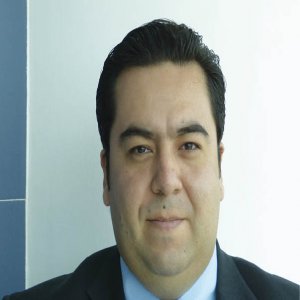Petrochemicals Leader Evolving Beyond Etileno XXI

STORY INLINE POST
Closely nestled to the bustling city of Coatzacoalcos lies Nanchital, a once sleepy town that has opened its doors to the petrochemical industry, heralding an age of economic prosperity and development. One of the driving forces behind this radical transformation was the joint venture between Mexico’s largest chemical products distributor, Grupo Idesa, and Brazilian company, Braskem. This JV resulted in Etileno XXI: a mammoth petrochemical plant which is expected to begin operations by the fourth quarter of 2015. José Luis Uriegas, the ambitious CEO of Grupo Idesa, is keen to detail the development process at Etileno XXI, recalling the huge challenge of commencing the project within a limited timeframe. “We began preparing the greenfield site in 2011, with no onsite infrastructure to rely on. Even though we had the raw materials and the basic infrastructure nearby, bringing all of the necessary products and services to our project site was not easy. It took us about one year to finish this step in order to move on to the EPC.” Currently, engineering at the site stands at 98% completion, with procurement at 92%, but construction is rapidly moving ahead. For the latter phase, Technip is helping to build the ethane cracker while Odebrecht and ICA Fluor are in charge of the construction of the entire petrochemical complex. “At the moment, there are more than 14,000 people working together in more than 100 different taskforces across the project. All are very keen on producing more every day and pushing Etileno XXI forward,” Uriegas explains.
Producing petrochemical products requires feedstock, so for Etileno XXI to produce ethylene and polyethylene, the key ingredient is ethane. In this regard, Uriegas is quick to underline the importance of feedstock availability in Mexico and says that Grupo Idesa will certainly push for a greater domestic ethane supply. “In the very short term, the best way to have more feedstock would be to extract more ethane from natural gas that is burned as fuel,” he says. This is already being done in Mexico, as ethane and some other liquids are extracted from methane or wet natural gas. However, as Mexico needs more feedstock, the use of this process may well increase. Ethane extraction is incredibly relevant since, instead of being flared, it can be directly provided to the petrochemical industry. “Mexico has a deficit of more than 1 billion tonnes of polyethylene products, so demand is strong, both here and in the neighboring US market,” says Uriegas.
Overall, Etileno XXI is preparing itself to be at about 85-95% capacity by the end of 2016, and expects to be producing at full capacity in 2017, yielding 1.05 million tonnes of ethylene and polyethylene. Placing the development phase of Etileno XXI within the context of the conditions of the petrochemical industry in North America, Uriegas is certain that the project will have a momentous advantage. “One key factor for our project is that most of the other crackers that will be developed in the region have already been revealed. There are several of them in the Gulf Coast of Mexico and some others spread throughout the US. However, I do not think that any of them will be producing before 2017.” That is a strong lead for Grupo Idesa, where being one or two years ahead is highly convenient in terms of positioning the company in a market. Evidently proud of the feat achieved at Etileno XXI, Uriegas also points out the support from the project’s stockholders, which has boosted Grupo Idesa’s image in the international investment community. At the end of 2013, the company issued a private bond for US$300 million with a seven year maturity underwritten by Morgan Stanley, HSBC, and Scotiabank. “When a company is in the development process before production, revenue is not guaranteed, and it is not that easy to attain such a level of financing. We’re happy to see that the investors have a good perception of Grupo Idesa’s future and Mexico’s petrochemical sector,” comments Uriegas.
Regardless of Grupo Idesa’s success at Etileno XXI, the company is hungry for more. Through its distribution division, Alveg, and its logistics subsidiary, Excellence, the company is seeking work beyond the scope of supplying petrochemical products. “Our core business is petrochemicals, but we also contemplate the possibility of the transportation and storage of different fuels and hydrocarbons,” Uriegas explains. Now that the country’s hydrocarbon industry is being liberalized, the company has spotted an opportunity in the storage and transportation of fuel to different parts of the country. “Mexico currently lacks good infrastructure for this purpose, so there is room for opportunity for our two other divisions: logistics and distribution. We are excited to see how we can seize these opportunities with specific solutions and possibilities for storage in ports or close to large cities,” he adds.
Two other developments factor into Grupo Idesa’s portfolio and will likely increase the company’s share of the petrochemicals market in the near future. The first involves a very different project from Etileno XXI in terms of scale, which is a joint venture between Grupo Idesa and Evonik, also known as CyPlus-Idesa. The project began as a 50-50 joint venture to produce 40,000 tonnes of sodium cyanide, a very important component for the mining industry to separate silver and gold from native rock. The raw materials for this project are natural gas and one of its side products, ammonia. “Natural gas availability has allowed us to push this project through successfully. Before the end of next year, the Los Ramones pipeline will bring natural gas from the north and other pipelines, which are still under construction, will give Mexico the natural gas availability to develop several downstream industries.” As a result, Evonik decided that Mexico was a convenient location to build a project of this type. “We are going ahead with the best technology that we can get from our partner. We feel that this project is yet another way of growing Grupo Idesa by utilizing hydrocarbons and different raw materials,” Uriegas points out. Returning to petrochemicals, Uriegas predicts plentiful growth in ethane derivatives. “In comparison to other regions, North America will be very rich in ethane within ten to 20 years, representing a fundamental advantage for us as a key player in this region.”






















